MARKETING
Why we care about marketing agencies
Nobody can do it all. No matter how good your marketing team is, there is going to be expertise and experience they don’t have. Fortunately, there is a marketing agency somewhere that does. They are an essential part of the martech ecosystem, filling gaps and providing insight faster and (hopefully) less expensively than you could do yourself.
If your company engages in advertising campaigns, chances are you have already considered using the services of an agency. Whether businesses should bring in external expertise or rely on internal talent is an age-old conundrum and a tough decision to make. It requires careful consideration of industry trends and a detailed understanding of your marketing objectives and capabilities.
With user preferences changing rapidly, you need to constantly rethink your advertising strategy to stay relevant in the advertising scene. In light of this, it may be wise to bring in an external agency with expertise in the changing advertising landscape and the best practices within it.
This article will discuss:
Estimated reading time: 6 minutes
Important factors when considering external help
The decision to bring in external help is context-specific. You can choose to outsource a specific campaign or your entire marketing vertical, depending on the requirements of your business.

Consider the following factors while making this decision:
The complexity of your campaign
If you plan to use a single-channel approach with a relatively straightforward campaign, you can use in-house talent. However, the nature of advertising has changed; most campaigns now use multiple platforms. In fact, using a multi-channel approach enables you to reach the most potential customers.
Selecting multiple platforms and coordinating their use requires considerable time and energy. Additionally, it also requires cross-channel expertise. Agencies can guide which channels are the most effective and in what combinations. They also centrally manage your campaign, making it easier to track the impact of various platforms.
The skills of your internal talent
The advertising landscape is subject to constant changes. Constantly upskilling and retraining your employees to match industry requirements can be a fairly expensive affair. In addition, hiring full-time employees each time a specific marketing need arises can blow up your marketing budget.
You should also consider what technical tools your team can access and use effectively. Is your internal marketing team able to successfully track customer data and campaign performance? Certain third-party agencies specialize in leveraging data to generate high-impact campaigns.
Cost-benefit analysis
While hiring external agencies can be more expensive than producing an in-house campaign, you should also consider the marginal benefit agencies provide. Advertising agencies aim to keep their teams updated with current market trends. Hence, the quality of the content they produce can be remarkably better than the output of your internal team.
Is the additional cost imposed by external agencies offset by the additional benefit they provide? That is the primary question to consider from both a quantitative and qualitative lens. You can also consider your past experiences while making this cost-benefit analysis.
Get the daily newsletter digital marketers rely on.
How to find the right agency
Finding the right agency can be a time-consuming process, especially if you’re taking external help for the first time. All advertising agencies are not the same; different firms specialize in different aspects of advertising. You should consider your marketing objectives, requirements, and budget to identify the right agency for your business.
The following process can help you shortlist the right agency:
Do diligent research
The fundamental purpose of conducting detailed research is to ensure that an agency’s expertise aligns with your advertising objectives. First, determine your budget. This will help you eliminate agencies that fall out of that budget and focus on a smaller pool. Additionally, you can also tap into your network or analyze your competition to determine which agencies are the most popular in your industry.
Next, outline your requirements in detail. Do you need help with the creative or technical aspects of advertising? Or do you prefer getting support for both? Certain agencies specialize in leveraging data and using sophisticated artificial intelligence tools to optimize the reach of your campaign. Others specialize in producing creative and engaging content. It is crucial to understand which agency is likely to help you meet your objectives.
Listen to pitches
Invite shortlisted candidates to present their pitches. Typically, this process involves agencies understanding your budget and requirements in detail and proposing their plan of action for your campaign and business. As part of this process, agencies might take a close look at your past and current campaigns on platforms such as Google Ads, Microsoft Ads, Facebook, Instagram, and other social media platforms.
The pitch will give you a concrete idea of what to expect from the agency and will allow you to judge whether their expertise can support the marketing needs of your business. You can finally hire the right agency depending on which pitch aligns best with your objectives.
Finding the right agency has numerous benefits for your business:
- Save time and energy. By relying on external experts to produce high-impact campaigns, you can focus on the core functions of your business. Streamlining your core functions can considerably improve your sales revenue and reduce costs. Further, the cost of hiring and training new employees can be higher than working with an agency.
- Leverage the latest technologies. Advertising agencies stay up-to-date on shifting market trends. From tracking data to employing AI tools, agencies can supplement the work of your in-house team to produce high-impact campaigns. This can give you a competitive edge and help engage your audience effectively.
- Get an external perspective. An outside opinion can be valuable, especially from an expert. Being closely attached to your product, brand, and customers might narrow your perspective and be an impediment to producing an impartial and effective campaign. Expert advice and multiple perspectives from professionals can improve the creativity of your marketing efforts.
Read next: How are digital agencies helping marketers transform in 2022?
How are agencies adapting to changing trends?
The advertising industry is witnessing considerable startup activity aiming to compete with traditional agencies. These startups are leveraging cutting-edge technology, such as AI, to help circumvent the problems arising from privacy law restrictions and increased competition.
There exists an agency to cater to every niche of advertising and marketing. If you have clear objectives and a fair assessment of the limits of your in-house talents’ capabilities, you can consider using an external agency to supplement your marketing efforts. Agencies can help you produce state-of-the-art, effective, and technology-backed campaigns that can provide the highest return on your investment. While identifying the best agency for your needs is a time-consuming process, the right agency partner can supercharge your marketing efforts.
Resources for learning more about agency services
MARKETING
YouTube Ad Specs, Sizes, and Examples [2024 Update]
![YouTube Ad Specs, Sizes, and Examples [2024 Update] YouTube Ad Specs, Sizes, and Examples](https://articles.entireweb.com/wp-content/uploads/2024/06/YouTube-Ad-Specs-Sizes-and-Examples.jpg)
Introduction
With billions of users each month, YouTube is the world’s second largest search engine and top website for video content. This makes it a great place for advertising. To succeed, advertisers need to follow the correct YouTube ad specifications. These rules help your ad reach more viewers, increasing the chance of gaining new customers and boosting brand awareness.
Types of YouTube Ads
Video Ads
- Description: These play before, during, or after a YouTube video on computers or mobile devices.
- Types:
- In-stream ads: Can be skippable or non-skippable.
- Bumper ads: Non-skippable, short ads that play before, during, or after a video.
Display Ads
- Description: These appear in different spots on YouTube and usually use text or static images.
- Note: YouTube does not support display image ads directly on its app, but these can be targeted to YouTube.com through Google Display Network (GDN).
Companion Banners
- Description: Appears to the right of the YouTube player on desktop.
- Requirement: Must be purchased alongside In-stream ads, Bumper ads, or In-feed ads.
In-feed Ads
- Description: Resemble videos with images, headlines, and text. They link to a public or unlisted YouTube video.
Outstream Ads
- Description: Mobile-only video ads that play outside of YouTube, on websites and apps within the Google video partner network.
Masthead Ads
- Description: Premium, high-visibility banner ads displayed at the top of the YouTube homepage for both desktop and mobile users.
YouTube Ad Specs by Type
Skippable In-stream Video Ads
- Placement: Before, during, or after a YouTube video.
- Resolution:
- Horizontal: 1920 x 1080px
- Vertical: 1080 x 1920px
- Square: 1080 x 1080px
- Aspect Ratio:
- Horizontal: 16:9
- Vertical: 9:16
- Square: 1:1
- Length:
- Awareness: 15-20 seconds
- Consideration: 2-3 minutes
- Action: 15-20 seconds
Non-skippable In-stream Video Ads
- Description: Must be watched completely before the main video.
- Length: 15 seconds (or 20 seconds in certain markets).
- Resolution:
- Horizontal: 1920 x 1080px
- Vertical: 1080 x 1920px
- Square: 1080 x 1080px
- Aspect Ratio:
- Horizontal: 16:9
- Vertical: 9:16
- Square: 1:1
Bumper Ads
- Length: Maximum 6 seconds.
- File Format: MP4, Quicktime, AVI, ASF, Windows Media, or MPEG.
- Resolution:
- Horizontal: 640 x 360px
- Vertical: 480 x 360px
In-feed Ads
- Description: Show alongside YouTube content, like search results or the Home feed.
- Resolution:
- Horizontal: 1920 x 1080px
- Vertical: 1080 x 1920px
- Square: 1080 x 1080px
- Aspect Ratio:
- Horizontal: 16:9
- Square: 1:1
- Length:
- Awareness: 15-20 seconds
- Consideration: 2-3 minutes
- Headline/Description:
- Headline: Up to 2 lines, 40 characters per line
- Description: Up to 2 lines, 35 characters per line
Display Ads
- Description: Static images or animated media that appear on YouTube next to video suggestions, in search results, or on the homepage.
- Image Size: 300×60 pixels.
- File Type: GIF, JPG, PNG.
- File Size: Max 150KB.
- Max Animation Length: 30 seconds.
Outstream Ads
- Description: Mobile-only video ads that appear on websites and apps within the Google video partner network, not on YouTube itself.
- Logo Specs:
- Square: 1:1 (200 x 200px).
- File Type: JPG, GIF, PNG.
- Max Size: 200KB.
Masthead Ads
- Description: High-visibility ads at the top of the YouTube homepage.
- Resolution: 1920 x 1080 or higher.
- File Type: JPG or PNG (without transparency).
Conclusion
YouTube offers a variety of ad formats to reach audiences effectively in 2024. Whether you want to build brand awareness, drive conversions, or target specific demographics, YouTube provides a dynamic platform for your advertising needs. Always follow Google’s advertising policies and the technical ad specs to ensure your ads perform their best. Ready to start using YouTube ads? Contact us today to get started!
MARKETING
Why We Are Always ‘Clicking to Buy’, According to Psychologists

Amazon pillows.
MARKETING
A deeper dive into data, personalization and Copilots
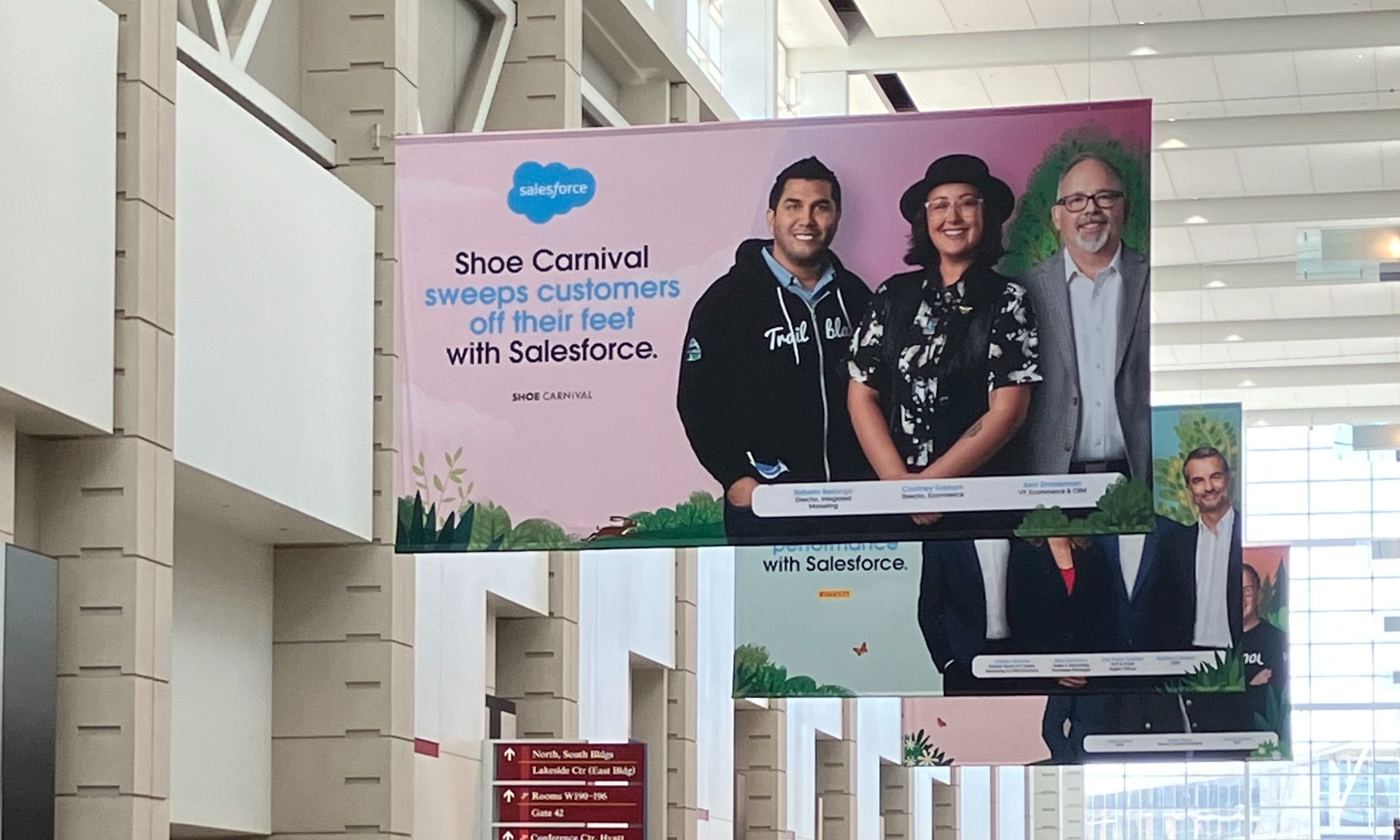
Salesforce launched a collection of new, generative AI-related products at Connections in Chicago this week. They included new Einstein Copilots for marketers and merchants and Einstein Personalization.
To better understand, not only the potential impact of the new products, but the evolving Salesforce architecture, we sat down with Bobby Jania, CMO, Marketing Cloud.
Dig deeper: Salesforce piles on the Einstein Copilots
Salesforce’s evolving architecture
It’s hard to deny that Salesforce likes coming up with new names for platforms and products (what happened to Customer 360?) and this can sometimes make the observer wonder if something is brand new, or old but with a brand new name. In particular, what exactly is Einstein 1 and how is it related to Salesforce Data Cloud?
“Data Cloud is built on the Einstein 1 platform,” Jania explained. “The Einstein 1 platform is our entire Salesforce platform and that includes products like Sales Cloud, Service Cloud — that it includes the original idea of Salesforce not just being in the cloud, but being multi-tenancy.”
Data Cloud — not an acquisition, of course — was built natively on that platform. It was the first product built on Hyperforce, Salesforce’s new cloud infrastructure architecture. “Since Data Cloud was on what we now call the Einstein 1 platform from Day One, it has always natively connected to, and been able to read anything in Sales Cloud, Service Cloud [and so on]. On top of that, we can now bring in, not only structured but unstructured data.”
That’s a significant progression from the position, several years ago, when Salesforce had stitched together a platform around various acquisitions (ExactTarget, for example) that didn’t necessarily talk to each other.
“At times, what we would do is have a kind of behind-the-scenes flow where data from one product could be moved into another product,” said Jania, “but in many of those cases the data would then be in both, whereas now the data is in Data Cloud. Tableau will run natively off Data Cloud; Commerce Cloud, Service Cloud, Marketing Cloud — they’re all going to the same operational customer profile.” They’re not copying the data from Data Cloud, Jania confirmed.
Another thing to know is tit’s possible for Salesforce customers to import their own datasets into Data Cloud. “We wanted to create a federated data model,” said Jania. “If you’re using Snowflake, for example, we more or less virtually sit on your data lake. The value we add is that we will look at all your data and help you form these operational customer profiles.”
Let’s learn more about Einstein Copilot
“Copilot means that I have an assistant with me in the tool where I need to be working that contextually knows what I am trying to do and helps me at every step of the process,” Jania said.
For marketers, this might begin with a campaign brief developed with Copilot’s assistance, the identification of an audience based on the brief, and then the development of email or other content. “What’s really cool is the idea of Einstein Studio where our customers will create actions [for Copilot] that we hadn’t even thought about.”
Here’s a key insight (back to nomenclature). We reported on Copilot for markets, Copilot for merchants, Copilot for shoppers. It turns out, however, that there is just one Copilot, Einstein Copilot, and these are use cases. “There’s just one Copilot, we just add these for a little clarity; we’re going to talk about marketing use cases, about shoppers’ use cases. These are actions for the marketing use cases we built out of the box; you can build your own.”
It’s surely going to take a little time for marketers to learn to work easily with Copilot. “There’s always time for adoption,” Jania agreed. “What is directly connected with this is, this is my ninth Connections and this one has the most hands-on training that I’ve seen since 2014 — and a lot of that is getting people using Data Cloud, using these tools rather than just being given a demo.”
What’s new about Einstein Personalization
Salesforce Einstein has been around since 2016 and many of the use cases seem to have involved personalization in various forms. What’s new?
“Einstein Personalization is a real-time decision engine and it’s going to choose next-best-action, next-best-offer. What is new is that it’s a service now that runs natively on top of Data Cloud.” A lot of real-time decision engines need their own set of data that might actually be a subset of data. “Einstein Personalization is going to look holistically at a customer and recommend a next-best-action that could be natively surfaced in Service Cloud, Sales Cloud or Marketing Cloud.”
Finally, trust
One feature of the presentations at Connections was the reassurance that, although public LLMs like ChatGPT could be selected for application to customer data, none of that data would be retained by the LLMs. Is this just a matter of written agreements? No, not just that, said Jania.
“In the Einstein Trust Layer, all of the data, when it connects to an LLM, runs through our gateway. If there was a prompt that had personally identifiable information — a credit card number, an email address — at a mimum, all that is stripped out. The LLMs do not store the output; we store the output for auditing back in Salesforce. Any output that comes back through our gateway is logged in our system; it runs through a toxicity model; and only at the end do we put PII data back into the answer. There are real pieces beyond a handshake that this data is safe.”
-

 SEARCHENGINES5 days ago
SEARCHENGINES5 days agoBillions Of Google goo.gl URLs To 404 In The Future
-
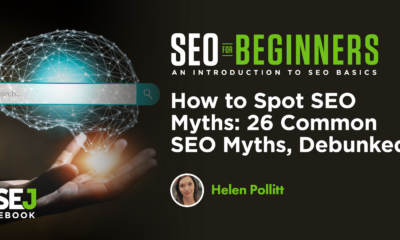
 SEO7 days ago
SEO7 days ago26 Common SEO Myths, Debunked
-
SEARCHENGINES4 days ago
Daily Search Forum Recap: July 22, 2024
-
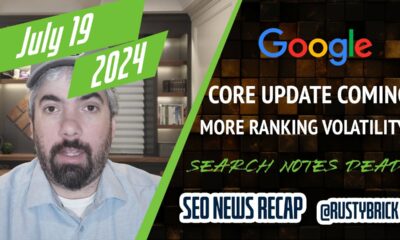
 SEARCHENGINES6 days ago
SEARCHENGINES6 days agoGoogle Core Update Coming, Ranking Volatility, Bye Search Notes, AI Overviews, Ads & More
-
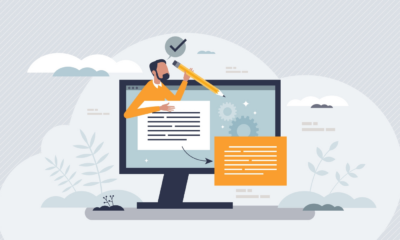
 SEO5 days ago
SEO5 days ago11 Copyscape Alternatives To Check Plagiarism
-
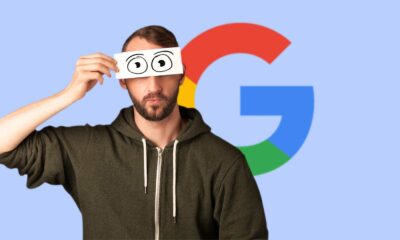
 SEO6 days ago
SEO6 days agoGoogle Warns Of Last Chance To Export Notes Search Data
-
SEARCHENGINES3 days ago
Daily Search Forum Recap: July 23, 2024
-

 AFFILIATE MARKETING6 days ago
AFFILIATE MARKETING6 days agoThe Top 5 AI Tools That Can Revolutionize Your Workflow and Boost Productivity







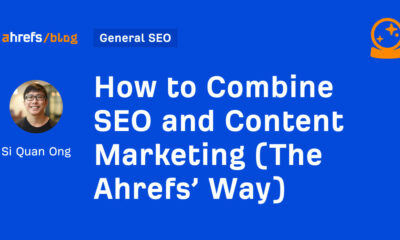

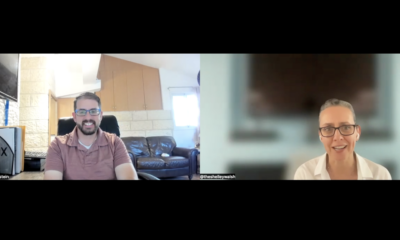







You must be logged in to post a comment Login